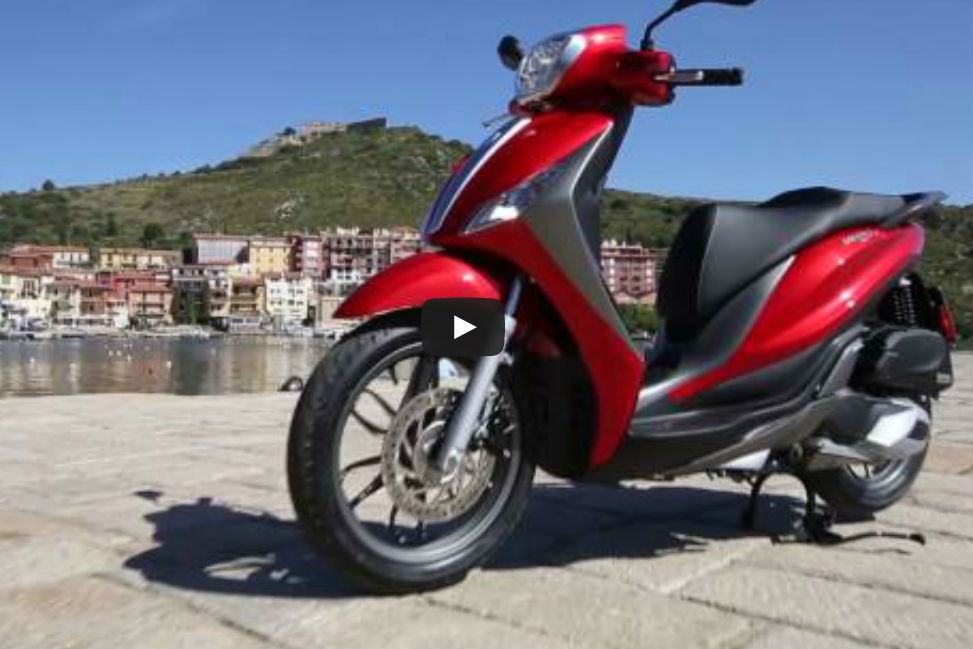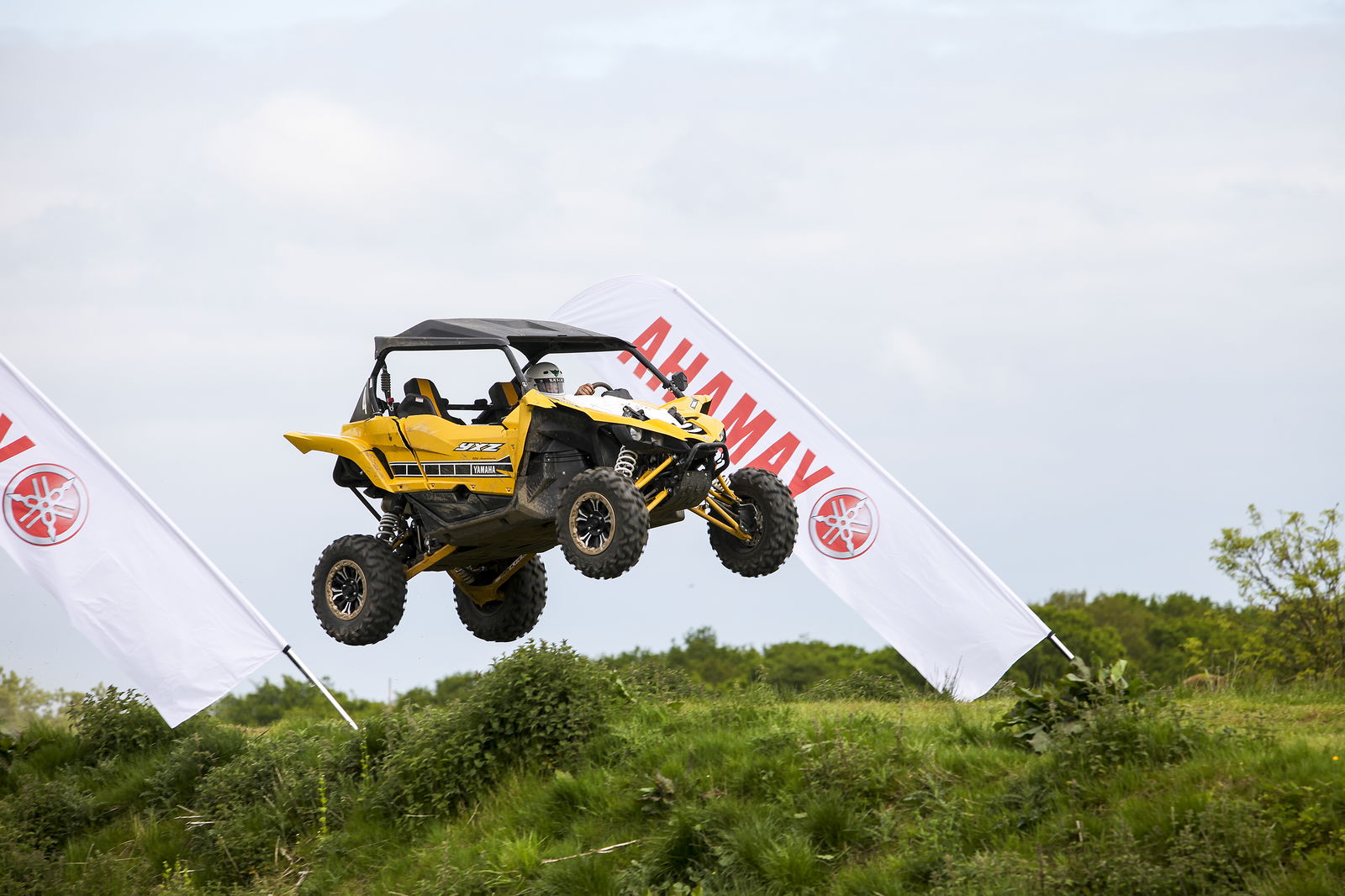First ride: BMW C650GT and C650 Sport review
Two-wheeled transport has never been so refined, luxurious and expensive

LAST NIGHT I was riding down the M1. It was dark and raining, and I was 100 miles from home. Normally, a rain soaked journey down an unlit, desolate stretch of motorway is exactly the sort of ride that can soon feel isolating; that combination of being miles from home and battling through the elements to get there can be a lonely experience. Had I been on a sports bike, I would have wound the throttle open more to reel in my house, a cold beer and a hot shower that bit sooner. But I wasn’t on a sports bike, I was riding BMW’s updated C650GT maxi-scooter and instead of gassing it, I stretched out my legs and raised the electronically adjustable screen to its highest setting before flicking on the heated seat and grips. I’ve never ridden anything on two wheels that feels so luxurious. During the week I had the C650GT, I needed to make a couple of trips to Silverstone and Donington Park and was totally cosseted as I wafted from A to B. It’s comfier than my couch and faster too, but with prices starting from £9,900 (plus another £850 for the Side View Assist and heated seat and grips included in the Highline kit), it costs more than a three-piece suite from DFS. That means that in the world of maxi-scoots, the BMW is the big bucks offering compared to the Suzuki Burgman 650 Executive and Yamaha T-Max, which both cost £8,999. During the same week, I also spent time on the GT’s sportier sibling, the £9,600 C650 Sport, which has had a restyle to coincide with its name change (it’s no longer called the C600 Sport).
Both the GT and Sport use the same 647cc twin-cylinder engine. Barring some changes to the mapping and some work done on the CVT transmission, the engine and drivetrain hasn’t changed and the 60hp on offer is enough for both scooters to briskly reach 90mph and beyond, so I’m told… The C650 Sport is peppier than the GT from a standstill and feels more alert and eager when darting through urban traffic, which is where it’s most at home. In town, both have enough grunt for quick traffic light escapes and there’s always enough drive available for a quick overtake of a slower moving vehicle or yoof on a less opulently appointed 'ped. The main difference is how lively the bikes feel, with the smaller and lighter Sport being more fun to ride than the sensible GT, which returned 56.7mpg on the day went rode out to take these photos.

Both scoots are impeccably behaved round town thanks to a good low-speed throttle response, which is said to be improved thanks BMW’s work on the CVT transmission. I haven’t ridden the previous version of this bike, but was impressed by the responsiveness and precision of the throttle which has very little of that laggy, elastic feel that you often get with scooters. The transmission worked smoothly and felt like it was always in tune with my throttle inputs. BMW has also given these bikes traction control for 2016, which easily activated when pulling away in the wet with a big handful of gas. It’s a nice feature, but if you are being ham fisted in the wet, you'll know when the traction control is working because it chops power very quickly. It also prevents traffic light burnouts. Along with the engine, the brakes and updated suspension are also shared across each model and the brakes have ample power with good feel. The updated suspension settings are designed to make each scooter more comfortable, and they’re both endowed with nice rides, and feel well controlled over poor surfaces. Both felt well connected to the road, even when fully loaded and being hustled down a bendy country lane. They handle well too, the C650GT surprisingly so considering how massive it is and the fact it weighs 261kg wet. The only time its weight mattered to me and my matchstick arms was when I had to push it around, otherwise it’s nicely balanced and although I was initially put off by the GT’s enormity, that feeling soon disappeared. It’s also competent at low speeds and I was relieved to discover that it’s not an effort to thread through traffic on it.
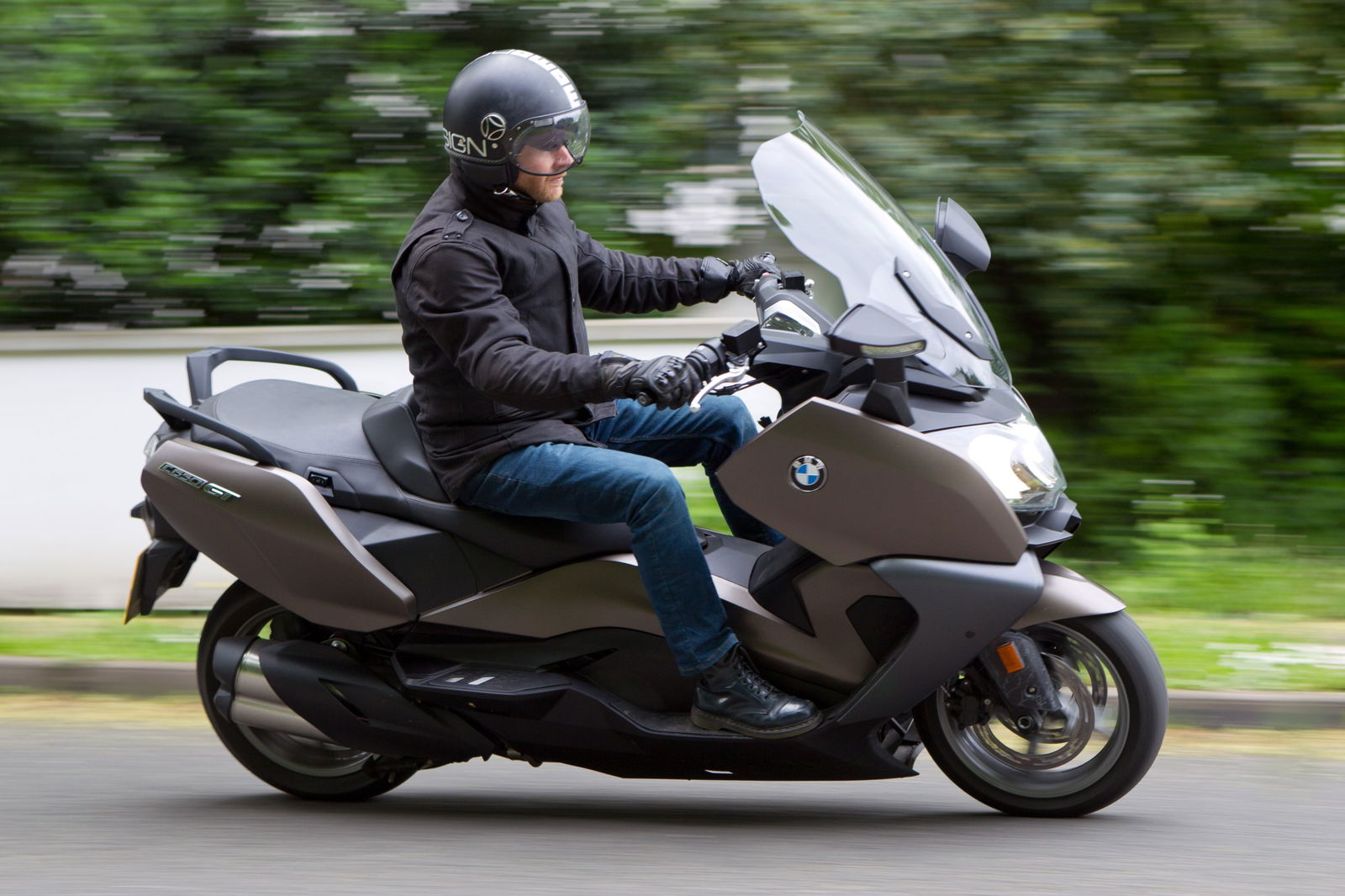
As befits its name, the Sport is easily the more athletic of the two. For a start, it looks it - it's brighter and looks more stylish next to the bronze-but-basically-brown GT. Crucially though, the Sport weighs 12kg less than the GT and is physically smaller, which equates to it being easier to flick about and more responsive to aggressive inputs. It’s well equipped for life in the city, thanks to its new sharper looks being backed by easy handling and sprightly performance and that’s where the Sport and GT diverge – the Sport is most at home hustling through a city, while the GT specialises in clicking off the miles in comfort and convenience.
The C650GT isn’t lacking when it comes to features that can take the edge off a long journey. As a gauge of quality and comfort, my arse cheeks are easily as sensitive as the Large Hadron Collider and the time it’s spent on the GT’s sumptuous seat has led me to conclude that it’s an immensely welcoming place to perch my posterior. Thanks to the lower back support, I could just relax in to the GT and being able to lean back a little is a small luxury that can go a long way to making a journey pass more comfortably. The foot boards are also large enough to allow me to fully extend my stumpy legs and move them to any number of positions.
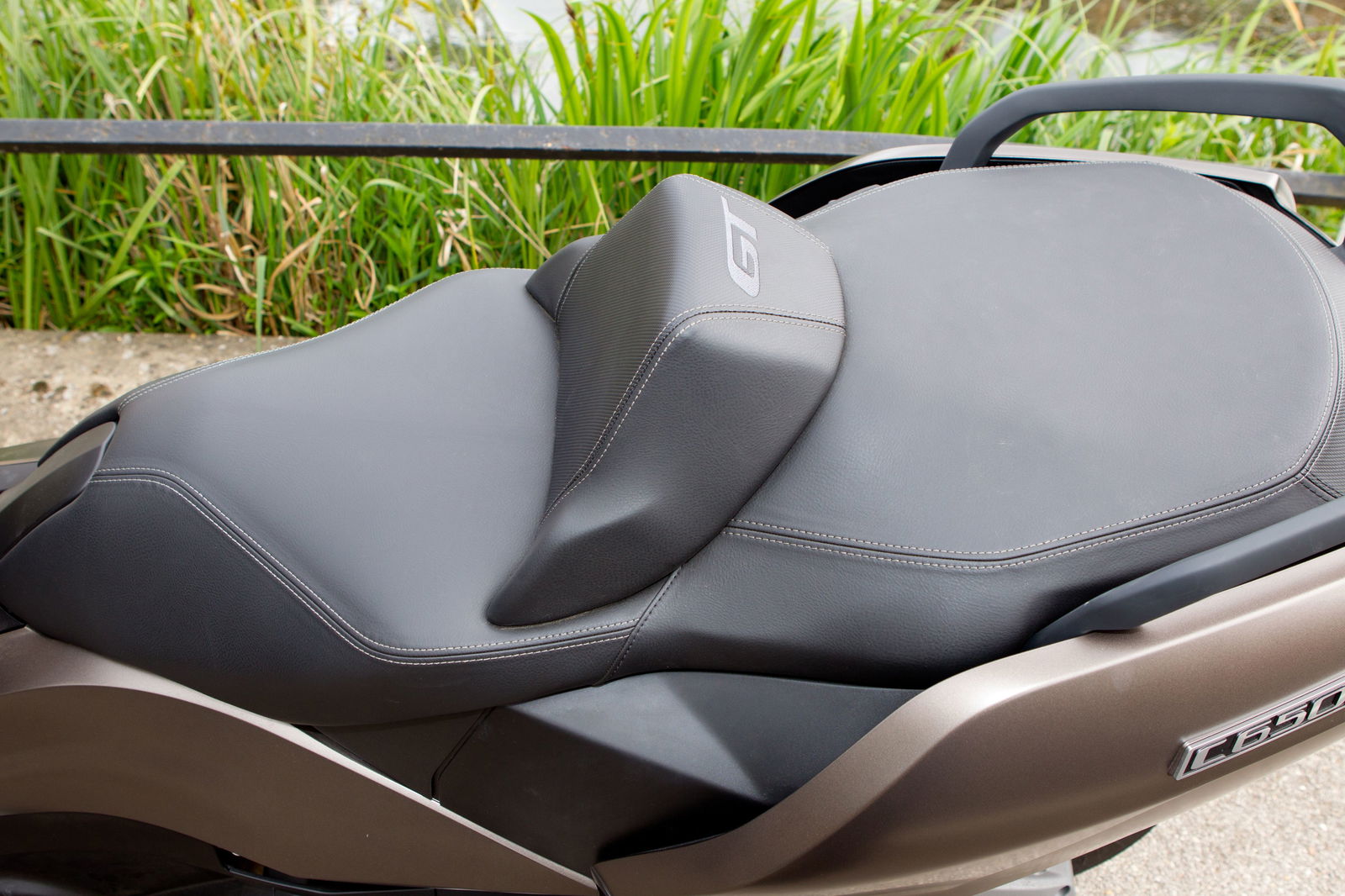
Comfort on the GT is also aided by the fact that it’s got such supreme wind protection courtesy of that bulbous front end which ably deflects wind away from the legs. At its highest setting, the electronically adjustable screen eliminates windblast and almost all wind noise on the motorway. It all adds up to a scooter that’s serenely comfortable when you need to put the miles in. The C650 Sport isn’t uncomfortable, it’s just not as plush as the GT. It’s got a comfy enough seat for city riding but it’s not in the same league as the GT’s. The foot boards give a fair bit of room for manoeuvre. Likewise, the manually adjustable screen provides good wind protection at the highest setting but it’s not as big at the GT’s. Both bikes have storage space aplenty. Again, here the GT is king with its sizeable under-seat compartment, into which I managed to fit a set of leathers, boots, gloves, waterproofs, a spare jumper and a couple of small cameras for a trip to Donington Park (I thought riding a brown maxi-scooter in full track kit was a bit much). When it’s not rammed full like that, it’ll take a helmet and some shopping, as long as your shopping isn't planks of wood or a new bath. The Sport’s under-seat compartment is less spacious but can still take a full-face lid and thanks to a clever expandable compartment, offers space for another helmet when the bike is parked.
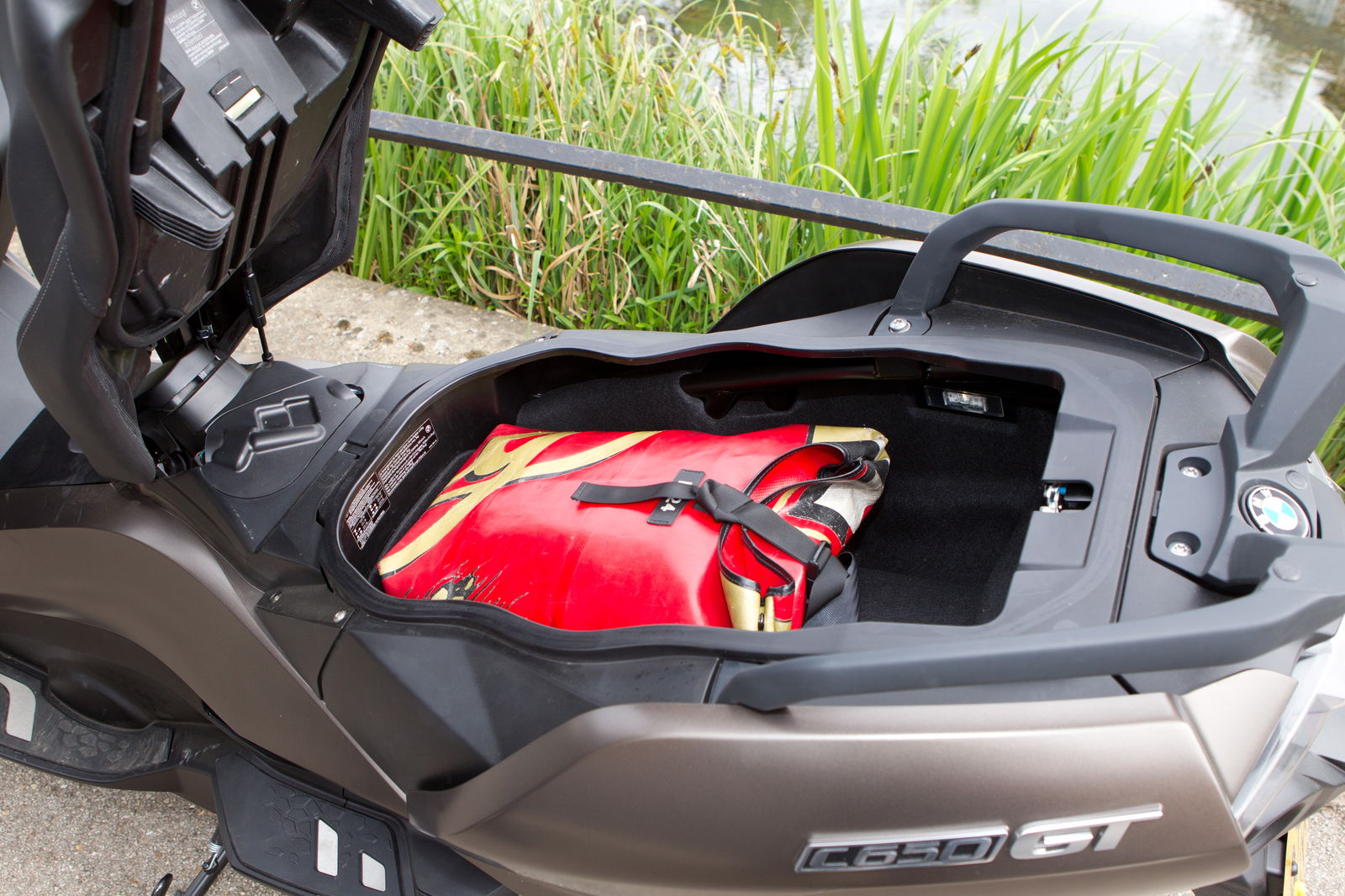
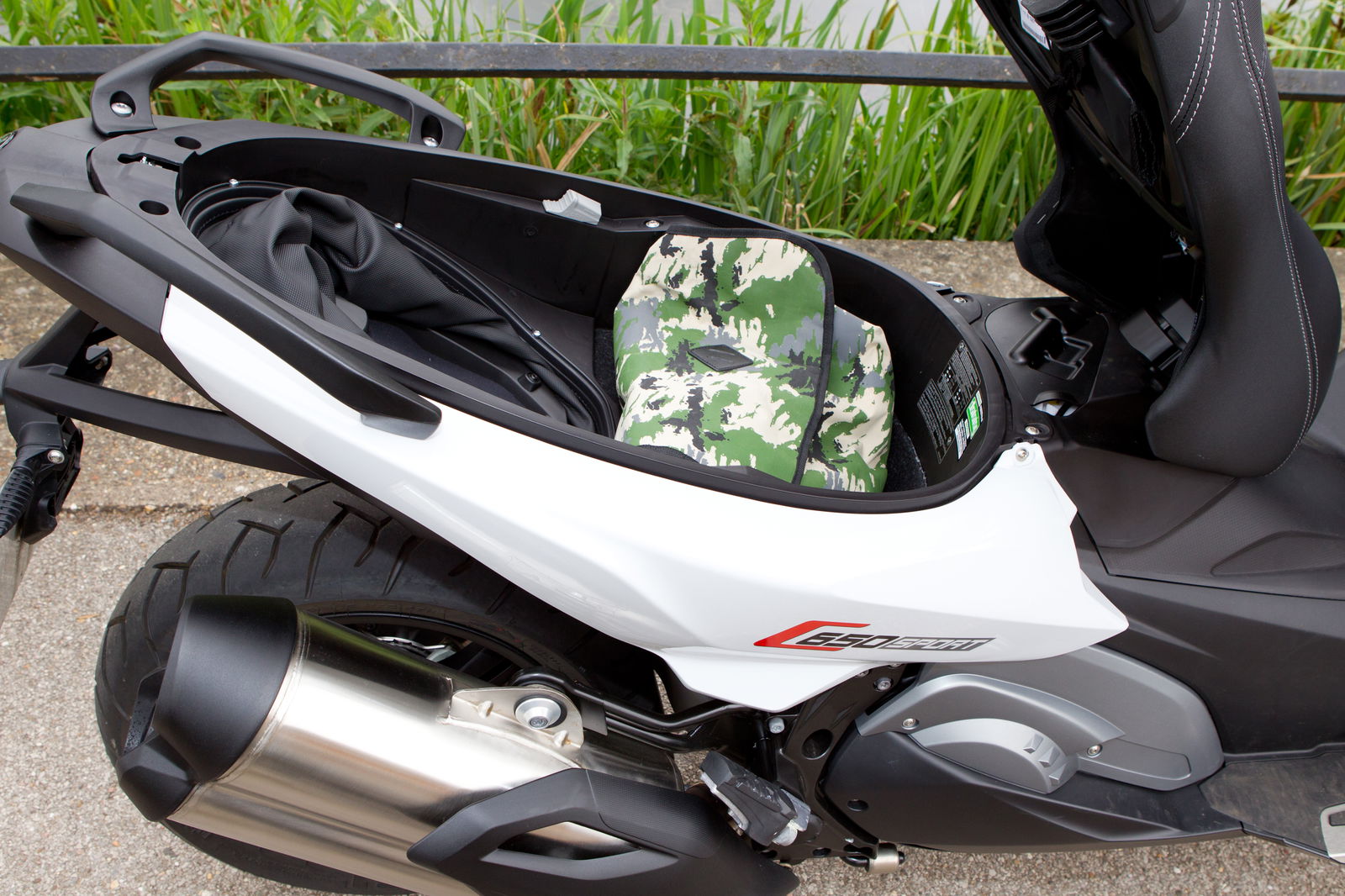
Each has the usual convenient glove compartments too. The left glove box on the C650GT lured me into a false sense of security because although it’s meant to be locked when the steering lock is on, I could easily open it by pulling at the door with two fingers, the lock and catch were that poor. The glove compartments on the Sport felt far superior, with a more positive feeling catch that I was unable to flick open with my hands. The mirrors on the GT deserve a shout for being superb thanks to the wide view the provide. Our bike was equipped with BMW’s Side View Assist blind spot detection system and the stalks of our mirrors contained warning triangles that lit up yellow when a vehicle moved into the detection area. The system was prone to going off when it was raining hard, or when filtering, or when passing street furniture, and sometime when there was nothing in close proximity. I wasn’t keen on SVA and found it distracting because of its tendency to go off erroneously, which initially made me start to doubt my observations until I ended up ignoring the warnings. There wasn’t one occasion where it came in useful above my own ability to use my mirrors and check my blind spot. I can see how it could potentially be useful but if you’re the kind of rider that needs a blind spot detection system, haven’t you got a more fundamental problem to address? Side View Assist costs £360 – you could use that to get some advanced training. Both models share the same crisp and easily readable dash, which thanks to a toggle button on the right switchgear, can display a wide range of useful information, including tyre pressures on the GT.
As two wheeled transport, the BMW C650GT and C650 Sport are brilliant. The GT is superb for making you feel like you could ride to any corner of the UK in total comfort and the Sport has the performance to make light work of city riding, and look good doing it. Barring the GT’s poor left glove compartment, both scooters are solidly built and resplendent with quality parts and finish. But it all comes at a price because there's no denying that they’re very expensive – £10k for a scooter is a huge amount of money, and for that price you’d have to really want one.
Model tested: BMW C650GT and C650 Sport
Price: C650GT – from £9,900 / C650 Sport – from £9,600
Engine: 647cc liquid-cooled 8-valve twin-cylinder
Power: 60hp at 7,750rpm
orque: 46.46lb/ft at 6,000rpm
Weight: C650GT – 261kg wet / C650 Sport – 249kg wet
Frame: Steel tube
Suspension: USD fork, 40mm diameter
Brakes: Front – Twin two-piston floating calipers with 270mm discs / Rear – Two-piston caliper and single 270mm disc
Seat height: C650GT – 805mm / C650 Sport – 800mm
Fuel capacity: 15.5l
